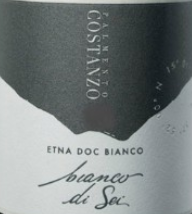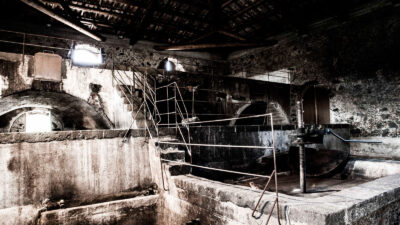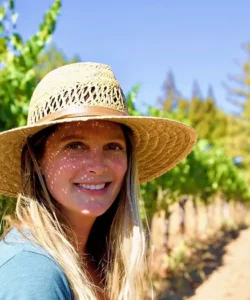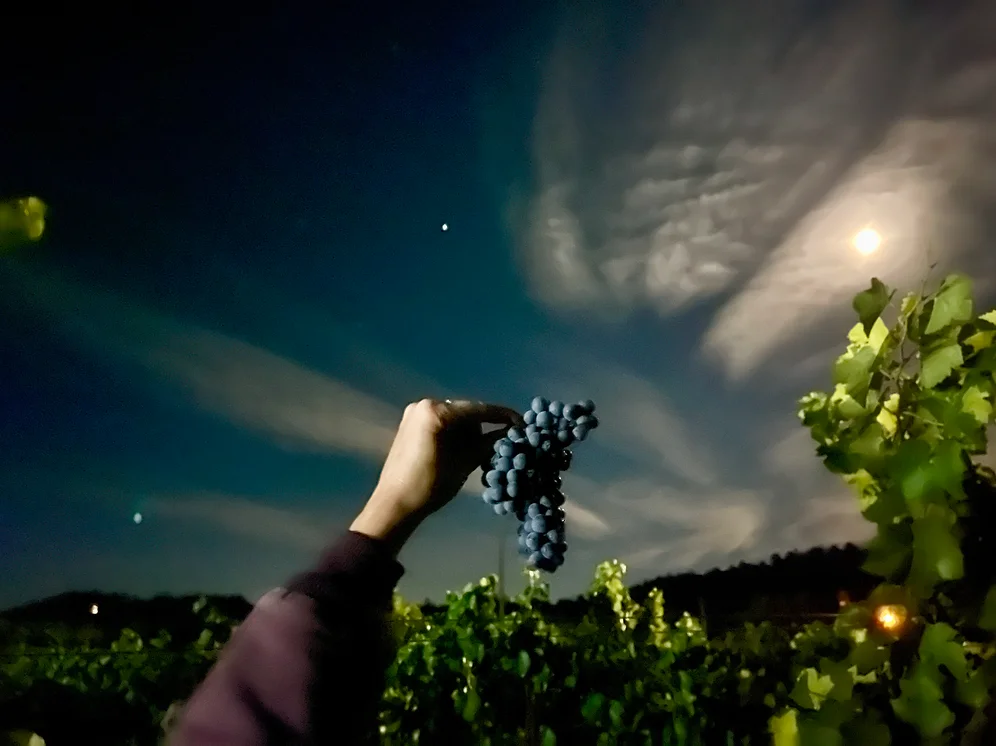- Palmento Costanzo 2021 Etna Bianco di Sei (Sicily) $49
- Read-Holland 2019 Deep End Pinot Noir (Anderson Valley, CA) $60
- Curto 2018 La Foia Barolo DOCG (Piemonte, Italy) $63
Become a member of our “Top Shelf Selections” Wine Club
1. Palmento Costanzo 2021 Etna Bianco di Sei, Sicily
The Wine
From bush-trained vines up to 100 years old, located on the North side of the volcano. Grown in soils that are a mixture of volcanic sand and rocks, the grapes come from two Contrada (there are 133 of these defined growing areas in the Etna DOC) – Santo Spirito and Passopisciaro. Hand harvest, soft pressing, natural yeast fermentation in stainless steel tanks. 10 months in tank, then 8 in bottle prior to release.
Tasting Notes: Straw yellow color indicates a complex and rich wine. Thie nose confirms this conclusion, with a complex bouquet of white flowers, citrus fruits and aromatic herbs with a slight hint of petrol. The wine’s palate experience is pleasingly fresh and persistent, with a long and refreshing finish.
The Label: Note the texture on dark half of this black-and-white label – it is actual volcanic ash from Mt Etna!
The Winery

Before Renovation
“Palmento” is an old Sicilian word for winery – one of many in Italy (Tenuta, Fattoria, Cantina…). In the case of Costanzo, the Palmento was discovered in a state of decay and ruin, brought to mondern efficiency through heroic efforts by the Costanzo family, their design team and contractors. Fitting modern winemaking equipment into a historic building required creative problem-solving at every turn.
Now fully restored, the building’s exterior is made of lava stones that house a 4-story, gravity-fed winemaking facility. It is now run by Valeria Costanzo, her daughter Serena and an excellent team of local professionals lead by Sicilian winemaker Nicola Centonze. Farming is certified organic, and the entire winery has been recognized by the prestigious Equalitas Certification Program for its low environmental impact and virtuous social and economic practices.
2. Read-Holland 2019 Deep End Pinot Noir, Anderson Valley
The Wine
This wine is showing what a stylish vintage 2019 was. Only 250 cases made. Sourced from the Deep End (Northwestern part) of Anderson Valley, the side of the valley closest to the ocean and its cooling influence, this compelling wine is all about character and elegance – an iron fist in a velvet glove. The fruit comes from two family growers – Romani and Nash Mill – whose homes are on their vineyards, assuring regular observation and monitoring. Hard-core Pinot geeks will want to know the vines have a mix of Clones 667 and 115, plus Pommard, and aged between 27 years (Romani) and 19 years (Nash Mill).
Both vineyards are farmed organically. Manual harvest, native yeast fermentation with 35% whole cluster to add aromatics and texture. Aged for 11 months on full lees with occasional stirring before bottling.
Tasting Notes: Intense aromatics of red and black fruits followed by the signature Chinese five spice that is a marker for Pinots from the Deep End of Anderson Valley. Black tea, sassafrass and high-toned red fruits on the palate with added complexity from hints of blood orange and raspberries, The wine’s acidity keeps it lively as it delivers a mouthful of pleasure all wrapped up in a robe of fine tannin.
Press and Critics Weigh In

Ashley Holland, Owner/Winemaker
’94pts and Cellar Selection’ Wine Enthusiast
“This robust, medium-bodied and moderately tannic wine from the coolest part of Anderson Valley offers attractive black fruit flavors and a good, grippy mouthfeel. It was made with 35% whole clusters in the fermentation and aged in 25% new French oak barrels. The flavors keep building and adding depth with each sip. Best 2025-2035.”-Jim Gordon WE
The Winery
Ashley Holland is the brains (and the brawn) behind this one-woman show. But her path to winemaking was circuitous – she studied to become an equine veterinarian and took an elective called “International Beverage Education”. After a couple more wine classes, she realized her vetinary science could be applied to winemaking as well – something that brought a satisfying creativity animal science couldn’t provide.
Her winemaking career then began in the Marlborough region of New Zealand, working for ‘Two Rivers of Marlborough’ for 4 vintages. She was lured back to California by the chnance to work with Bill Price, Bob Cabral, and Ryan Prichard of ‘Three Sticks Wines’ in Sonoma, where she was their Associate Winemaker for 4 vintages.
3. Curto 2018 La Foia Barolo DOCG
The Wine
Nadia Curto is a formidable winemaker who learned her craft from her father, a grower, and her uncle Elio Altare, a legendary producer. She serves as her own enologist and is ‘hands-on’ with every aspect of the winemaking. This wine walks the tightrope between classic and modern – powerful, even a touch austere, but with undeniable finesse.
Tasting notes: This wine, made from 100% Nebbiolo from 4 acres of the family’s vineyards, is elegant and approachable, with flavors that are lush and enormously concentrated. Beautifully balanced layers of leather, dark cherry, truffles, anise, earth, and even rose hips. Organically farmed (not certified), manually harvested, unclarified/unfiltered, aged in barrel for two years and bottle for one year prior to release.
625 cases produced. Drink now through 2033+.
The Winery
Located in La Morra, a town known for elegant reds, Curto’s wines incorporate the traditional Barolo style and the Modernists’ style:
The Traditionalists:
This style predominated for most of the 20th century. The wines were largely undrinkable for a decade, but as the tannins softened over time, sensational for the next three decades or more. During the period where this style was the norm, Nebbiolo growers could barely make a living selling their grapes. History tells us they were ashamed of their status as farmers and even had difficulty finding a spouse. I’ve heard of one family who bought two cases of Dolcetto for their daughter’s wedding and the grower threw in a case of Barolo as a complimentary bonus. Such was the lowly status of Nebbiolo!
The Modernists:
Introduced by the “Barolo Boys” in the 1980s by a handful of young people soon to take over their parent’s Barolo properties. After visiting world-class wineries in Burgundy and other top global regions they brought home new growing (lower yields, later harvests) and winemaking techniques (including new oak barrels instead of neutral botti). Their wines introduced a new style of Barolo that was far more aromatic and approachable upon release.
But Barolo is a small town, and this success was not without its controversy. Some traditional growers and critics defended the old style as better suited for global collectors, deriding the modernists for cheapening the product to meet the demand of the masses. Perhaps, but once the modernists’ style gained ground on the global stage, the region saw more investments in one decade than they had in the prior century! Barolo was named the “King of Wine” in some circles.
The Post-Modernists:

Partner/Winemaker Nadia Curto
Nadia Curto benefits from being the niece of one of the Barolo Boys – Elio Altare – who was disinherited by his father after he took a chainsaw to the family’s old Botti (casks) to make room for new oak barrels. After spending her young adulthood in her father’s vineyard, Nadia was recruited by Elio to learn winemaking.
She is now a leader of the post-modernists, producers who craft wines rooted in the region’s tradition but are still approachable sooner than many other Baroli. Her wines have great structure but stunning aromatics and sophisticated, earthy layers.
Behind this overall style is Nadia’s simultaneous devotion to the past and the present. For example, she makes wine organically, joined the ‘green experience’ movement in Piedmont and got rid of traditional filtering by using a technique called thermo-shock. And, to adapt to the region’s changing climate, she also uses a short rotary fermentation (considered modern and a bit controversial!) to soften her tannins and deliberately showcase the fruit.
No one can deny her results are stunning: powerful Barolo with a palate that lingers for days and a marked yin-yang balance. To put it mildly, Nadia Curto is “all in”. Leading the charge for women winemakers in Piedmont, Nadia took her enological smarts and expanded the family’s business from grower to producer. Today, she channels all her expertise into tiers of cru Barolo that are remarkably nuanced and possess a true feminine side.


